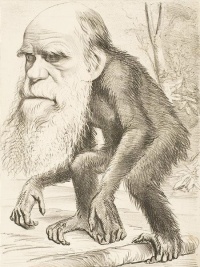Evolutionary neuroscience
From The Art and Popular Culture Encyclopedia
|
Related e |
|
Featured: |
Evolutionary neuroscience is an interdisciplinary scientific research field that studies the evolution of nervous systems. Evolutionary neuroscientists attempt to understand the evolution and natural history of nervous system structure and function. The field draws on concepts and findings from both neuroscience and evolutionary biology. Historically, most empirical work has been in the area of comparative neuroanatomy, and modern studies often make use of phylogenetic comparative methods. Selection experiments and experimental evolution approaches are also being used more frequently.
Conceptually and theoretically, the field is related to fields as diverse as comparative psychology, neuroethology, developmental neurobiology, evo-devo, behavioral ecology, anthropology and evolutionary psychology.
History
The field began after the publication of Darwin's On the Origin of Species, but brain evolution was largely viewed at the time in relation to the incorrect scala naturae. The 1936 book The Comparative Anatomy of the Nervous System of Vertebrates was a landmark publication in the field. Following the Evolutionary Synthesis, the study of comparative neuroanatomy was conducted with an evolutionary view, and modern studies incorporate developmental genetics.
Researchers
See also


